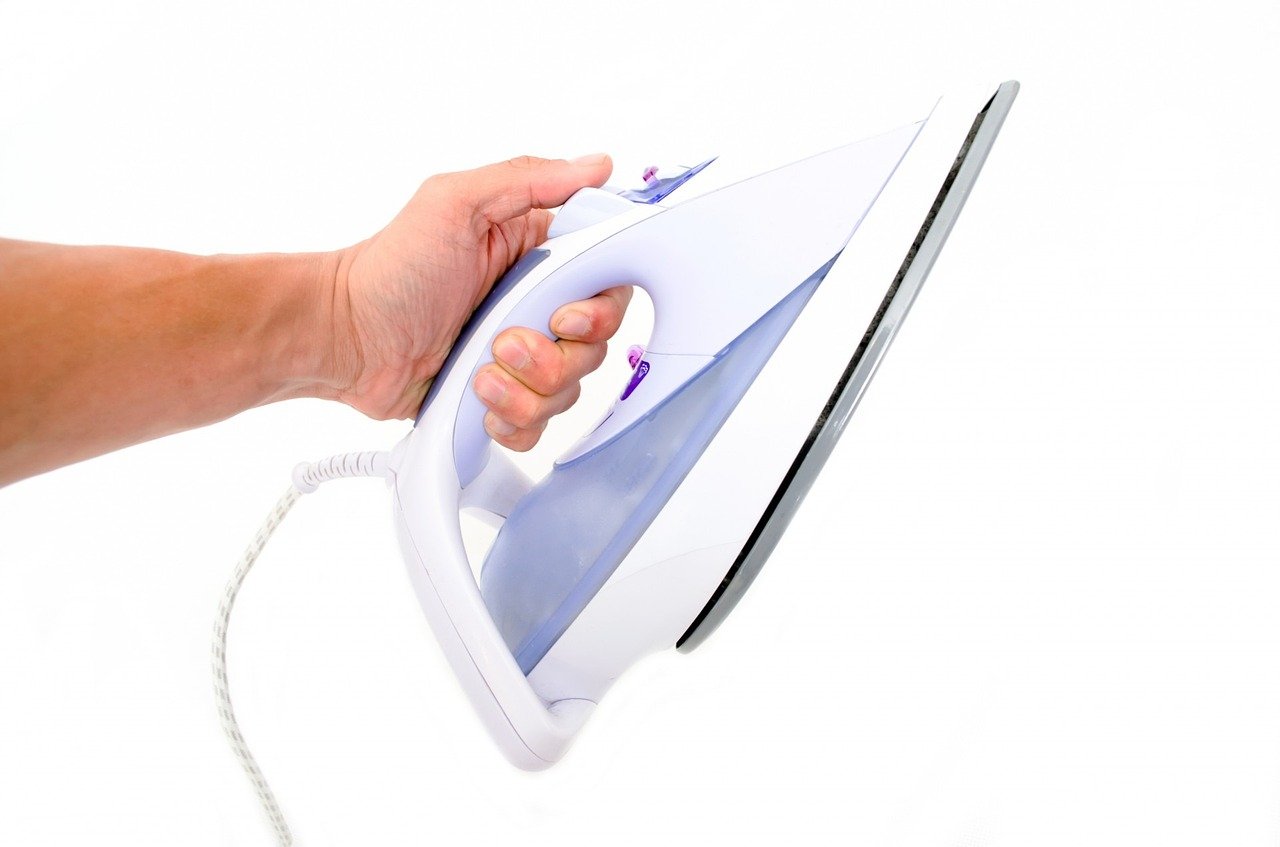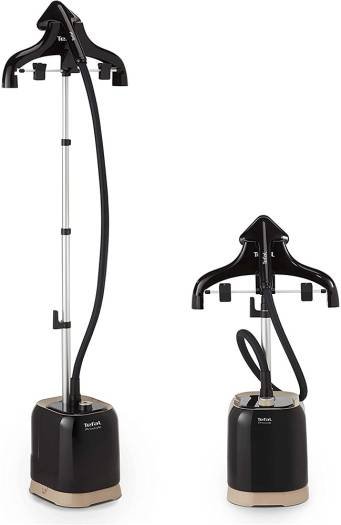When it comes to the iron versus steamer discussion, the choice ultimately depends on the fabric. This guide provides all the necessary information about wrinkle removal from your clothes and textiles.
Exquisite fabrics like silk, linen, chiffon, and cotton, as opposed to synthetic materials such as polyester, spandex, nylon, and rayon, are prone to wrinkles and often demand special attention during laundry. Hence, it is essential to pay close attention to clothing labels, which provide not just laundry instructions but also insights into wrinkle-removal techniques. This brings us to the discussion on whether to choose laundry and ironing services for the optimal care of your delicate garments.
While many garments can withstand an iron’s heat, delicate items might necessitate a clothing steamer. The distinction lies in the heat type and whether the fabric is under pressure.
A steamer employs heat and moisture (from the hot water vapor) for dress ironing, to eliminate wrinkles and smooth the fabric surface. Conversely, an iron uses heat and pressure (from the iron’s weight and applied pressure), for dress ironing, to remove fabric wrinkles. This process is often referred to as “pressing.” It can also assist in creating sharp fold lines, such as cuffs, pleats, and creases. Modern irons come with a water reservoir, allowing users to add steam to the process. However, pressure is always involved. So, when should you choose a steamer over an iron to iron a dress ? Let’s delve deeper.
When to Use a Clothes Steamer
Fabric type generally dictates whether to use a steamer or an iron. Fabrics with a nap or pile, like corduroy or velvet, have always been challenging to iron because the pressure can crush the pile and alter the fabric’s look. A steamer allows the fabric to drape naturally.
Other fabrics are also ideal for steaming. Synthetics react well to gentle steam and are less likely to melt. Delicate fabrics, such as silk or chiffon, are also less likely to be damaged by a steamer. Once you master the correct way to wash silk, you’ll want to remove wrinkles without risking damage.
However, always check your clothing or textile tag for any special instructions.
Advantages of Steamers
New handheld steamer models enable you to easily smooth large, difficult-to-iron items like drapes without having to take them down. With these innovations, there’s no requirement for an ironing board, and the likelihood of causing damage to your clothing items is significantly reduced, making them an ideal complement to professional ironing services in Dubai.
Disadvantages of Steamers
Steamers may not be as effective at creating crisp pleats, cuffs, creases, and hems. It takes longer to remove wrinkles from robust fabrics like cotton using a steamer versus an iron.
When to Use an Iron

You’ve mastered how to wash white clothes to avoid dull dress shirts and have become proficient at removing pilling on clothes. Add some wrinkle-free garments, and you’re all set, right? While wrinkle-free items may help you avoid ironing, they probably won’t leave your clothes looking crisp and sharp. That’s where ironing (or steaming) comes into play.
Most textiles can endure ironing. Heavy-duty cottons and linens respond well to the pressure, high heat, and moisture an iron can provide, especially when the iron can also supply some steam.
Always double-check the clothing label first. The laundry symbols will indicate if an item should not be ironed or if it can be ironed but shouldn’t use the iron’s steam function.
Also read, How Ironing Service Can Improve Your Wardrobe for Wrinkle-Free Confidence
Advantages of Irons
Irons work better on heavier fabrics, like cotton, denim, and canvas, than steaming. Ironing produces crisp pleats, cuffs, creases, and hems. An iron is better for sewing (quilting and tailoring) because the pressure presses seams open, which will give you a better finish.
Drawbacks of Irons
Choosing an incorrect temperature can result in fabric damage due to melting or burning with an iron. Additionally, an ironing board occupies extra space. Looking for a new one? There are some top-notch ironing boards available.
Ironing or Steaming Your Clothes: How-To Guide
Whether you’re ironing or steaming, it’s recommended not to use tap water in your device. Tap water contains minerals like calcium and magnesium that can lead to a crusty buildup, potentially clogging your iron or steamer. Instead, opt for deionized, distilled, or demineralized water to extend your device’s lifespan.
If you notice mineral buildup in your steamer or iron, adhere to the manufacturer’s guidelines for removal. It could be as straightforward as a vinegar-and-water solution, or the warranty might necessitate the use of their suggested cleaning product.
Ironing Your Clothes: A Step-by-Step Guide
Knowing when to iron your clothes and linens isn’t enough; you also need to understand the correct ironing technique to avoid damaging your items. The process is relatively straightforward. Follow these tips for perfectly pressed clothes:
- Check the tag: Always start by reading the clothing label for any temperature setting instructions.
- Use a press cloth: To minimize the risk of scorching or light burn marks on cotton fabric, place a press cloth (a lightweight plain-weave fabric like muslin) between the iron and the fabric you’re ironing.
- Keep moving: Never let the iron rest in one spot while pressing the fabric. It should always be in motion.
- Iron damp clothing: The optimal time to iron clothing is when it’s slightly damp after machine washing. Remove any wrinkles and then hang the garment to finish drying completely.
Steaming Your Clothes: A Simple Guide
Steaming is straightforward. However, always follow the instructions in your steamer’s user guide. It will provide the recommended method for hanging a garment before steaming and include useful tips, like pushing the steamer head against the fabric while applying steam. Here are the basic steps for steaming fabric:
- Pull the clothing item taut before steaming.
- Hold the steamer one inch from the fabric.
- Slowly move the steamer up and down the garment.
- Repeat, if necessary. Heavier fabrics may require multiple passes with the steamer to remove severe wrinkles.
What to Consider When Purchasing a Steamer

Your intended use for a steamer will dictate the size you should consider. If you plan to travel with it, opt for a compact model. If you don’t travel much, a larger model is fine, provided you have storage space.
If you plan to steam many items at once, look for a steamer with a larger water reservoir to reduce the frequency of refills. This feature will enable you to steam more items.
What to Consider When Purchasing an Iron
Look for an iron that includes specific fiber types on the temperature gauge. Nylon and polyester must be ironed at much lower temperatures than cotton or linen, and having the fiber types listed is helpful. Avoiding accidental scorching due to high iron settings is not only a garment-saving measure but also contributes to the longevity of your favorite clothing items, making them a perfect fit for the meticulous care provided by expert cleaners in Dubai.
Conclusion
Mastering the art of clothes care through the comprehensive exploration of ironing and steaming techniques is key to maintaining a pristine wardrobe. Whether you’re considering the delicate fabrics like silk and linen or the robust synthetics, understanding when to opt for ironing or steaming is crucial. As you navigate this ultimate guide, it becomes evident that the choice between the two methods often depends on fabric types and the desired finish.
For individuals in Dubai seeking a convenient and expert solution to clothing care, the incorporation of professional laundry and ironing services is paramount. Residents can benefit from specialized services such as ironing service near me in Dubai and easily locate laundry and ironing services near them. With a focus on precision and attention to detail, these cleaning services in Dubai, provided by expert cleaners, not only ensure the longevity of your garments but also contribute to a consistently polished and well-maintained wardrobe. Whether you prefer the crispness achieved through ironing or the gentleness of steaming, incorporating these services adds a layer of convenience and expertise to your clothes care routine, ensuring your favorite pieces endure the test of time.










